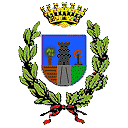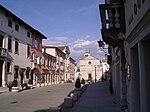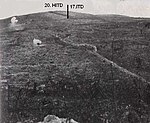Church of the Immaculate Conception (Farra d'Isonzo)
The Church of the Immaculate Conception is an Italian church located in Borgo Zuppini, a district of Farra d'Isonzo. The church dates back to the 17th century. It belonged to the Gradiscan family of the Zuppini counts. In November 1665, Emperor Leopold confirmed the noble title to brothers Giovanni Battista, Antonio and Filippo. The church was erected on land owned by the Zuppini family by Count Giovanni Battista to fulfill a vow, following his recovery from an illness. The church was once private property of the Zuppini family, but it belongs to the Parish of Farra d'Isonzo since 1924. A descendant of the founder, died in 1778, was buried in the chapel. It was dedicated to the Immaculate Conception, to which the count had turned to beg for grace. It is the oldest church in the diocese named after the Immaculate Conception.
Excerpt from the Wikipedia article Church of the Immaculate Conception (Farra d'Isonzo) (License: CC BY-SA 3.0, Authors).Church of the Immaculate Conception (Farra d'Isonzo)
Via Conti Zoppini,
Geographical coordinates (GPS) Address Nearby Places Show on map
Geographical coordinates (GPS)
| Latitude | Longitude |
|---|---|
| N 45.904691666667 ° | E 13.514913888889 ° |
Address
Via Conti Zoppini 36
34072
Friuli-Venezia Giulia, Italy
Open on Google Maps







